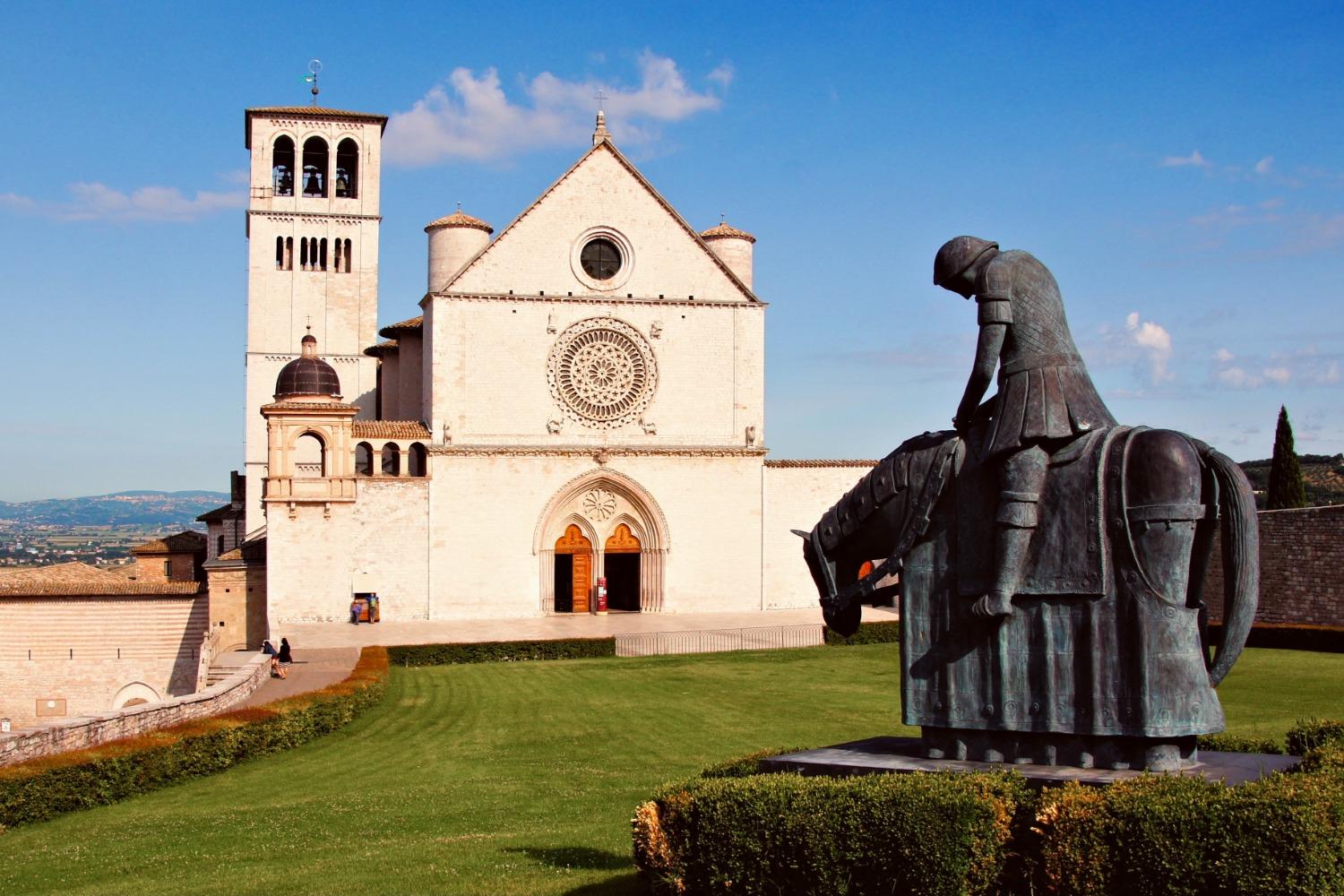
In 2005, a statue of St. Francis of Assisi was installed just across a sloping lawn from the basilica that bears his name and holds his relics in Assisi. The statue, produced by Italian sculptor Norberto Proietti, is named Il Ritorno di Francesco, “The Return of Francis.” The statue itself is inornate: it is intentionally colorless and lacking in fine detail. Somewhat unexpectedly, St. Francis is depicted wearing armor and sitting atop an armored horse. He is positioned so that if he were to look up, he would gaze across the broad valley above which his beloved Assisi is perched. But the man on the horse does not look up – instead, he looks down, his head slouched in shame.
In 1202, at the age of 20, Francis joined a military raid undertaken by Assisi against their rivals to the north, Perugia. Perugia won the field, and Francis was taken captive. He was imprisoned at Collestrada, less than 10 miles from his home, for a year. During this time, captivity and illness threatened to break him, and there are hints that he began to reflect more seriously upon his life. Upon his liberation and return to Assisi, however, he began to resume the carefree lifestyle for which he was known before his captivity. In 1205, Francis agreed to join a knight from Assisi in enlisting in the army of Walter of Brienne to fight in a Papal army engaged in conflict in southern Italy. Francis departed from Assisi but was forced to rest at Spoleto due to an illness. It was there that he had a dream ordering him to return to Assisi. In the dream he heard a voice say, “Follow the Master rather than the man.”
From the point of his return to Assisi, Francis was a changed man. Although his conversion was gradually progressing, we know that he would soon renounce the trappings and entertainments of his life in order to pursue “Lady Poverty.” We know that Francis would live a life of heroic virtue and sanctity, inspiring countless others to follow in his footsteps. We know that Francis would become one of the greatest saints of the Church, an instrument of renewal merely by embracing the Gospel. But when Francis returned to Assisi, no one knew what the future held. All that was seen was a lone rider, a failure or coward or something in between, passing into the city in shame.
“The Return of Francis” freezes the future saint in a moment of worldly shame, shot through with the potentiality those with the benefit of hindsight cannot fail to see. Wearing unused armor upon a warhorse too ashamed to look up, the failed soldier sits across from God’s response: the Basilica of Saint Francis of Assisi. If only the man on the horse would lift his head, he would see that the valley he knew so well had become a place of peace and spiritual renewal for countless pilgrims. If only the man on the horse would lift his head, he would see that his return to Assisi was only the first step in the campaign for which he was created.

The First Draught
To receive the Weekly Update in your inbox every week, along with our weekly Lectio Brevis providing insights into upcoming Mass readings, subscribe to The First Draught.